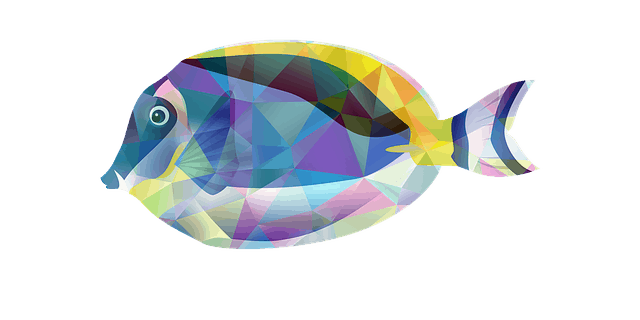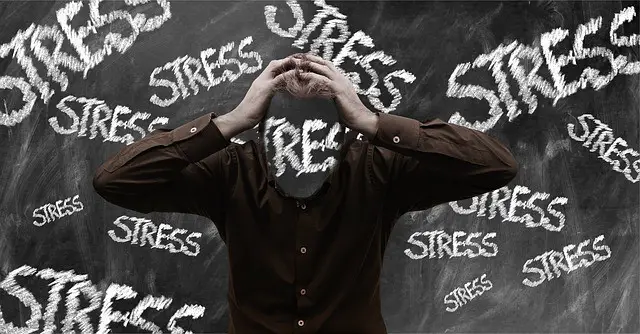Many fish owners wonder if their pets are getting the right amount of nutrition and if they’re being fed enough. The health of your fish is linked to a number of factors including the condition of the aquarium and the care provided to them.
The fish food that’s available at your local pet store may be enough to keep your fish alive, but it’s a good idea to mix things up now and then. This way they will get a balanced diet and live long healthy lives. But before you start feeding the contents of your refrigerator to your fish, it’s important to do your research and find out what’s safe for them to eat.
Get to Know Your Fishes Eating Requirements and They Will Thrive
The first step is to understand the dietary requirements of the type of fish you have. Just like humans, fish can be classified as herbivores, carnivores and omnivores. It is crucial to find out which of these groups your aquatic pet falls under and cater to its needs accordingly.
What Do You Feed Your Fish When You Run Out Of Fish Food?
If you ever find yourself in a situation where you’re out of fish food, there’s no need to panic. There are plenty of healthy alternatives that serve as emergency fish food. These can be fed to both herbivore and predatory fish. As a matter of fact, changing up the food you feed your pets once in a while can be healthier for them in the long run. Let’s take a look at some of the easily available alternatives to packaged fish food.

Fish Food Substitutions: What Human Food Can You Feed Your Fish?
Some of the foods we eat are perfectly safe for fish. If you run out of fish food, these are the best alternative options to feed them.
Green Leafy Vegetables: Many fish species love greens like spinach and lettuce. Ensure that you cut the leaves up into tiny pieces before adding them to the tank. Boiled greens are a better option since they are easier for the fish to digest. Some species may be allergic to greens, so avoid this food if you notice your fish acting lethargic. Brussels sprouts, cucumbers, sweet potatoes, and zucchinis are other veggies you can try.
Seafood: Carnivorous species can be fed white fish fillets like cod and tilapia. It’s a good idea to avoid pieces of oily fish since these can make your tank messy. If using frozen fillets, make sure you defrost them before feeding them to your pets.
Rice or Pasta: This may come as a surprise, but fish love to eat cooked rice and pasta! These are convenient and readily available alternatives when you run out of fish food. Simply break the rice or pasta into smaller pieces and drop them in the tank.
Hard-boiled Egg Yolks: Many smaller fish and shrimps love hard-boiled egg yolks. It’s a good idea to feed them tiny pieces as an occasional treat. But be careful not to overdo it, since yolk particles can make the water in your tank cloudy.
Peas: Boiled peas are another excellent substitute for fish food. Remove the outer skins and break them up into smaller pieces before feeding them to your aquatic pets.
What Can Fish Eat Besides Fish Food?
Give your fish an occasional break from packaged food and feed your aquarium fish treats like flies and worms. These can be bought from your local pet store or even found in your garden. Fish particularly love to eat earthworms, which are filling and nutritious.
Feeding your fish meat should be avoided since they have a hard time digesting the fibers. Also, the fats in meat are not ideal for your aquatic pets. If you must feed them meat, go for less fatty cuts like beef hearts. These can be frozen and shredded into small bits before feeding. Many different fish species can digest the less fatty cuts.
What Can You Feed Goldfish When Out of Fish Food?
A key aspect of proper goldfish care is ensuring that your pet gets the right kind and amount of food. Not doing this can be detrimental to the well-being of your fish.
Typically, the diet of a goldfish in the wild includes insects, crustaceans, smaller fish and plants. These fish are omnivores, and the food you feed them must be as close to their natural diet as possible.
There are specially formulated pellets and flakes available that are meant only for goldfish. If you run out of fish food, you can feed them boiled vegetables, peas or small pieces of seafood like white fish or shrimp.
It’s better to opt for freeze-dried food rather than live food to avoid the chance of transferring infections to your goldfish. Freeze-dried foods are easily available and offer similar nutritional benefits without the risk of disease.
What Can You Feed a Betta Fish When Out of Fish Food?
Betta fish (Siamese Fighting Fish) feed primarily on insect larvae in their natural habitat. If you run out of fish food, try giving your pets little pieces of shrimp, fish or worms. Tuna works well, and so do other white fish varieties. If these remain un-eaten, make sure you remove them from the tank to avoid contaminating the water.
Bettas love mosquito larvae, so look for them in containers of standing water. You can also try pieces of soft vegetables like peas. Make sure to boil the peas, remove the outer shells and cut them up into tiny pieces before dropping them in.
What Can You Feed Your Tropical Fish if You Run Out of Food?
Soft veggies are a safe bet for most types of tropical fish. Many fish keepers feed their pets peas since these are nutritious and easy to digest. Larger fish can swallow them whole, but you will need to break them into tiny pieces for the smaller ones. Opt for frozen peas rather than canned ones since they may contain harmful preservatives.
Fish like African cichlids and goldfish are particularly fond of greens like lettuce and parsley. Carrots, zucchini, lettuce, watermelon, and cucumbers are other options as long as they are cut into appropriately sized pieces.
A Common Question I Hear is Can Fish Eat Bread?
In general, white bread is considered bad for the health of your fish. No you should not feed your fish bread. Feeding your fish pieces of bread regularly can lead to bloating. You may also notice your fish acting more lethargic than usual. For these reasons, anglers are restricted from using white bread as bait in certain areas.
White bread is low in protein and other vital nutrients. Too much of it can actually damage the guts of your fish. Breadcrumbs also expand quite a bit when they hit the water, leaving your tank messy. So it’s a good idea to opt for healthier alternatives when feeding your fish.
That being said if it’s going to be more than 3 or 4 days until you can get your fish some food then feeding them a tiny bit of bread might be alright in the interim.
How Long Can Your Aquarium Fish Survive Without Food?
Many types of tropical fish species can survive for a surprisingly long time without food. So there’s no immediate cause for concern if you run out of fish food or are planning a short trip.
Several factors determine exactly how long your fish can survive without sustenance. The size of the fish, age and dietary habits all have a part to play. In general, larger fish can go without food for more prolonged periods than smaller ones. Similarly older fish can survive longer than younger fish without food.
This is due to the fact that larger, older fish have more fat reserves and body mass. If your lifestyle involves a lot of travel, it’s a good idea to keep only bigger, more resistant fish varieties as pets. Make sure you experiment with a trial fasting period before going out of town to see how long your fish can manage without food.
Another factor to consider is the dietary needs of your fish. Carnivorous fish don’t need to eat every day and have adapted to survive in the wild where food can be hard to come by. Herbivorous fish, on the other hand, need to be fed daily.
They are used to grazing on plant matter all day long, which is generally harder to digest. So a lot more of it is required to deliver the adequate amount of nutrition to your aquatic plant-eaters. Carnivorous fish can survive for more extended periods without food than herbivorous fish.
How Often Should You Actually Feed Your Fish?
In addition to what you feed your fish, it’s also important to pay attention to how often you feed them. This is linked to the size and breed of your fish. Many of the species grown in an aquarium need to be fed only once a day. This can also be divided into two smaller feedings.
It’s advisable to do your research and learn about the type of fish you own and their daily dietary requirements. You could also consult other fish owners or your local veterinarian. Fish will eat when fed, even when they’re not hungry. Avoid overfeeding your aquatic pets as this can do more harm than good in the long run.
Final Thoughts
It’s important to pay attention to both the amount and the type of food you’re feeding your pets. Learn about the fish you own and determine the most appropriate kind of nutrition for them. Some species have very specific daily requirements while others can survive on a broad range of foods.
Whatever you choose to feed your fish, make sure it is well balanced and provides your pets with the protein, vitamins, and minerals that they need. Instead of giving them large quantities of cheap pellets or flakes, stick to small amounts of nutritional food. This way your fish will stay healthy in their aquatic habits for many years to come.
You now have some great options to feed your fish if you run out of fish food.
Related Posts
Can You Feed Tropical Fish Every Other Day?






